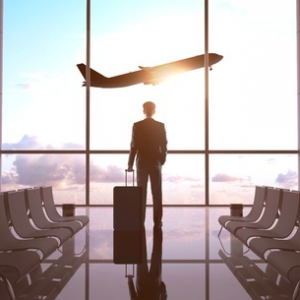7 Tips for Business Travel Preparation

Over the course of my career I’ve traveled to dozens of countries for business, which means I’ve learned more than a few things about streamlining an effective travel preparation process.
Executives and managers have a lot on their minds before a business trip, and it’s important for them to create a packing routine so they can better focus on upcoming meetings, presentations and networking with new prospects.
Here are my top seven tips for business travelers to include in their travel planning routine:
1. Pack two days before you go. It’s no fun having to start a load of laundry at 9 p.m. the night before you leave after realizing a key article of clothing isn’t presentable. To prevent this last-minute hustle, finish 90 percent of your packing two nights before you leave. That way you’ll have a more relaxing day before your flight. You don’t want to start a trip in a harried state.
2. Create a packing list and save it. Using the same packing list each trip can help reduce the amount of thought needed, which is key when you already have plenty on your mind about your upcoming trip. Write your packing list in pencil and continually refine it. Having this list in place offers peace of mind every time you get ready to pack and helps ensure you won’t forget something. You can have several lists—one for vacation or business travel, in warm weather, cold weather, long trips, short trips, etc.
3. Lay everything on a table. Before choosing which size of suitcase to pull out of the closet (which should actually be your last packing step), lay everything on your dining room table to make sure it’s all there. You can easily add and subtract items throughout your packing day as needed. This is preferable to stuffing everything in a bag and then later having to dig through it to make sure you remembered an item. By laying everything out, you can easily see what you don’t really need. The travel axiom from a 1949 issue of Reader’s Digest is true: “Decide on all the clothes and all the money you will need; then take half the clothes and twice as much money…”.
4. The farther you go, the less you take. This seems counter-intuitive, but having forgotten something on several trips has taught me how little a traveler really needs. On my farthest and most prolonged trips, I usually take just a little backpack and a shoulder bag. If you check a suitcase, be prepared to live out of your carry-on for a few days if necessary—it’s heartbreaking when your checked bag goes to Paris and doesn’t have the courtesy to take you along. Better yet, do what you can to take both bags on board.
5. Have separate travel toiletries ready. Instead of packing your toothbrush, have a separate travel toothbrush and every other hygiene item in a gallon, slider Ziploc bag ready to go. Then you won’t have to think about your toiletry bag—you’ll only need to toss it in. Keep it freshly stocked. A cupboard in my bathroom looks like a mini pharmacy with numerous items such as travel-sized toothbrushes, toothpastes and shaving creams to replace empty units. You can use smaller, sandwich-size bags for items you don’t want mixing with the rest, such as hair product or grainy emery boards for filing your nails.
6. Keep your wires in a cash bag. Get a vinyl zipper cash bag to hold your computer charger, mobile device charger and headphones. This keeps all your stringy items confined together neatly. It’s cumbersome to root through wires when digging for an item in your carry-on. I’ve employed this tip after reading a travel profile of a New York designer who did this by using a bag from a luxury retailer that cost hundreds of dollars. Trust me, a cash pouch from a bank or an office supply store for five bucks works just as well—even without the word “Hermès” or “Gucci” on it.
7. Gain trusted traveler status to skip the lines. Yes, it will take time to set an appointment and interview with a border security official. For the next five years, however, you’ll have your Global Entry status, which allows you to re-enter the country by checking in at an automated kiosk for a minute instead of having to wait in long re-entry lines. Included in your status is TSA PreCheck, which for domestic flights allows you to hop the TSA line and not have to remove your shoes or suit jacket, or take your computer out of your bag. It’s refreshing to pass the cattle line and waltz through security like it’s 1999.
Bonus tip: Buy a good book on the road. While you might save a bit of money downloading text to a device, there’s nothing like holding a book, gauging how much longer until the end, and being able to remember where words and key passages were on a page. Be sure to write in it your name, date and location where you bought it. My copy of Graham Greene’s classic “The Quiet American” serves both as a conversation piece on the shelf and a reminder of memories from a Southeast Asia trip every time I open the cover and see the inscription from a decade ago: Ansel Oliver/July 2005/Bangkok.
—Ansel Oliver is a manager for special projects at SnappConner PR.
